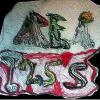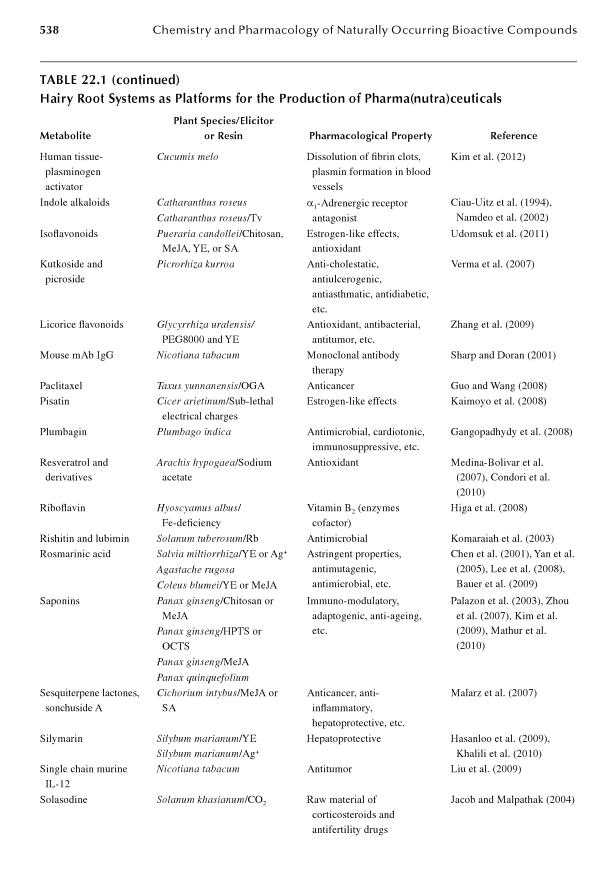Here ares some studies I found about DHT:
http://www.ncbi.nlm....pubmed/20228125
Increased intratumoral androgens in human breast carcinoma following aromatase inhibitor exemestane treatment.
Takagi K1,
Miki Y,
Nagasaki S,
Hirakawa H,
Onodera Y,
Akahira J,
Ishida T,
Watanabe M,
Kimijima I,
Hayashi S,
Sasano H,
Suzuki T.
Abstract
Sex steroids play important roles in the development of many human breast carcinomas, and aromatase inhibitors are used for the anti-estrogen therapy. Recent studies have demonstrated that aromatase suppressed 5alpha-dihydrotestosterone (DHT) synthesis in breast carcinoma cells, but intratumoral concentration of androgens and its significance have not been reported in the breast carcinoma patients treated with aromatase inhibitors. Therefore, we examined androgen concentrations in breast carcinoma tissues treated with exemestane, and further performed in vitro studies to characterize the significance of androgen actions. Intratumoral DHT concentration was significantly higher in breast carcinoma tissues following exemestane treatment (n=9) than those without the therapy (n=7), and 17beta-hydroxysteroid dehydrogenase type 2 (17betaHSD2) status was significantly altered to be positive after the treatment. Following in vitro studies showed that 17betaHSD2 expression was dose dependently induced by both DHT and exemestane in T-47D breast carcinoma cells, but these inductions were not additive. DHT-mediated induction of 17betaHSD2 expression was markedly suppressed by estradiol (E(2)) in T-47D cells. E(2)-mediated cell proliferation was significantly inhibited by DHT in T-47D cells, associated with an increment of 17betaHSD2 expression level. These findings suggest that intratumoral androgen actions are increased during exemestane treatment. 17betaHSD2 is a potent DHT-induced gene in human breast carcinoma, and may not only be involved in anti-proliferative effects of DHT on breast carcinoma cells but also serve as a potential marker for response to aromatase inhibitor in the breast carcinoma patients.
http://link.springer...3-4-13#/page-1
Effects of eight weeks of an alleged aromatase inhibiting nutritional supplement 6-OXO (androst-4-ene-3,6,17-trione) on serum hormone profiles and clinical safety markers in resistance-trained, eugonadal males
The purpose of this study was to determine the effects of 6-OXO, a purported nutritional aromatase inhibitor, in a dose dependent manner on body composition, serum hormone levels, and clinical safety markers in resistance trained males. Sixteen males were supplemented with either 300 mg or 600 mg of 6-OXO in a double-blind manner for eight weeks. Blood and urine samples were obtained at weeks 0, 1, 3, 8, and 11 (after a 3-week washout period). Blood samples were analyzed for total testosterone (TT), free testosterone (FT), dihydrotestosterone (DHT), estradiol, estriol, estrone, SHBG, leutinizing hormone (LH), follicle stimulating hormone (FSH), growth hormone (GH), cortisol, FT/estradiol (T/E). Blood and urine were also analyzed for clinical chemistry markers. Data were analyzed with two-way MANOVA. For all of the serum hormones, there were no significant differences between groups (p > 0.05). Compared to baseline, free testosterone underwent overall increases of 90% for 300 mg 6-OXO and 84% for 600 mg, respectively (p < 0.05). DHT underwent significant overall increases (p < 0.05) of 192% and 265% with 300 mg and 600 mg, respectively. T/E increased 53% and 67% for 300 mg and 600 mg 6-OXO, respectively. For estrone, 300 mg produced an overall increase of 22%, whereas 600 mg caused a 52% increase (p < 0.05). Body composition did not change with supplementation (p > 0.05) and clinical safety markers were not adversely affected with ingestion of either supplement dose (p > 0.05). While neither of the 6-OXO dosages appears to have any negative effects on clinical chemistry markers, supplementation at a daily dosage of 300 mg and 600 mg for eight weeks did not completely inhibit aromatase activity, yet significantly increased FT, DHT, and T/E.
http://onlinelibrary...1674.x/abstract
The Direct Pituitary Effect of Testosterone to Inhibit Gonadotropin Secretion in Men Is Partially Mediated by Aromatization to Estradiol
ABSTRACT: In men, administration of exogenous testosterone (T) exerts direct negative feedback effects at the pituitary as well as at the hypothalamic level. This study was undertaken to determine whether T itself causes the inhibitory effects on the pituitary, or whether conversion to estradiol (E2) or dihydrotestosterone (DHT) is required. We assessed the biological activity of serum luteinizing hormone (LH) and follicle-stimulating hormone (FSH), as well as immunoactivity. Blood samples were drawn before, during, and after a continuous, 72-hour i.v. infusion of T (15 mg/day), E2 (90 μg/day), or DHT (500 μg/day). Each of these doses is twice the daily production rate of the steroid. Each man received each of the three steroid infusions. We studied four men, ages 23–35, with idiopathic hypothalamic hypogonadism (IHH), who were treated with pulsatile gonadotropin releasing hormone (GnRH) until their gonadotropins reached the normal range. Serum levels of T, E2, DHT, and levels of immunologically active and biologically active LH and FSH were measured. We found that administration of each steroid increased serum levels of the infused steroid to the upper physiologic range. Administration of T or E2 resulted in decreased mean levels of biologically and immunologically active LH and FSH; administration of DHT did not alter gonadotropin secretion. These data suggest that some of the direct effect of T at the pituitary level in men is mediated by E2, whereas peripherally formed DHT may not play an important role in this process.


























































